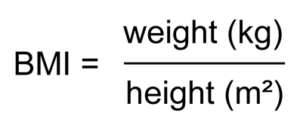


Bariatric Surgery
Bariatric surgery (weight loss surgery) includes a variety of procedures performed on people who have obesity. Weight loss is achieved by reducing the size of the stomach with a gastric band or through the removal of a portion of the stomach (sleeve gastrectomy) or biliopancreatic diversion with duodenal switch or by resecting and re-routing the small intestine to a small stomach pouch (gastric bypass surgery).
There are two basic types of bariatric surgery
Restrictive surgeries: Restrictive surgeries work by physically restricting the size of the stomach and slowing down digestion.
Eg. Sleeve gastrectomy. This procedure generates weight loss solely through gastric restriction (reduced stomach volume). The stomach is restricted by stapling and dividing it vertically and removing more than 85% of it. The stomach that remains is a narrow tube or sleeve, which connects to the intestines. This restricts the amount of food that stomach can hold, as well as removes the portion of the stomach that generates Ghrelin, the hormone that causes hunger. The procedure permanently reduces the size of the stomach and is performed laparoscopically.
Malabsorptive surgeries: Malabsorptive/restrictive surgeries are more invasive surgeries that, in addition to restricting the size of the stomach, physically remove parts of the digestive tract, interfering with the absorption of calories.
Obesity Releted Health Hazards
- Type II Diabetes
- Hypertension
- Heart Disease
- Joint Problems
- Menstrual Problems
- Gall Stones
- Increased Cholesterol Levels
Obesity and BMI
Measuring Obesity

Treatment
- Gastric Sleeve
- Mini Gastric Bypass
- Gastric Bypass
- Duodenal Switch
- Gastric-Band
- Gastric Balloon
BMI Classification
- 18-25 Normal
- 25-30 Overweight
- 30-35 : Class I Obesity
- 35-40 : Class II Obesity
- > 40 : Class III Obesity

